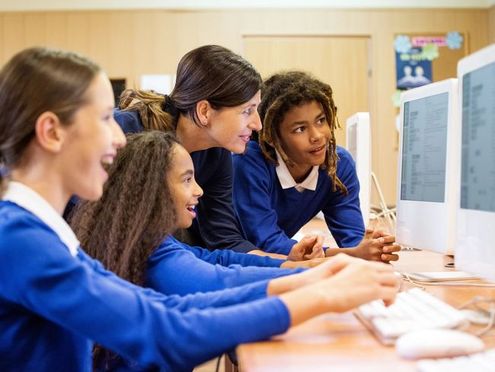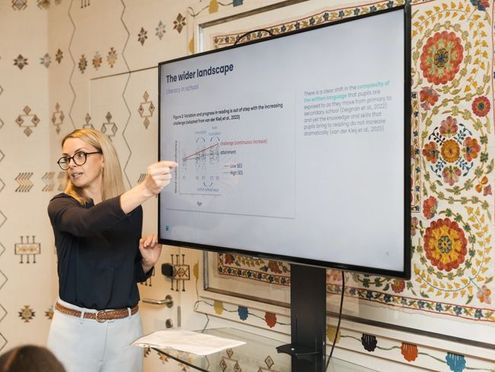What is skill development?
The term "skills" can be quite a vague one. Humans have created, learned and mastered a fair amount of skills over the last hundreds of thousands of years – an amount that will only continue to grow as we carry on experimenting and innovating. We usually have to add qualifiers to specify precisely what skills or types of skills we’re referring to.
Even the team responsible for UNESCO’s International Literacy Day found it necessary to offer their own personal definition. According to them, “‘skills’ means knowledge, skills and competencies required for employment, careers, and livelihoods, particularly technical and vocational skills, along with transferable skills and digital skills.” The aim of the theme, they say, is to explore “integrated approaches” that aid both the development of these types of skills and the development of literacy.
UNESCO’s decision to highlight literacy as distinct from the broader category of "skills" is telling. Without a doubt, literacy is a skill in and of itself – crucial for many careers and many livelihoods – but it earns additional emphasis through its ability to act as a gateway to other competencies. Through literacy, we can read informative texts, understand advice and instructions and communicate clearly. As demonstrated above, literacy skills are even required to understand or express what the term "skills" itself might mean in any given context.
Digital literacy skill development
One area of skills development that is being heavily discussed is digital literacy. As UNESCO have stated, “people need digital and literacy skills to work, live, learn and communicate productively. Without these skills, people face marginalisation not only in the physical world but in digital realms as well.”
The ubiquitous need for both these skills is why an online vocabulary curriculum, which merges the two worlds together, felt like such a powerful and necessary tool. Especially for younger primary students, our teacher founders wanted Bedrock to be a safe, accessible entry point for users to start navigating digital spaces, whilst focusing purely on the exploration of words and their meanings.
And it just so happens that many of the strategies required to make digital spaces accessible to inexperienced users align with those that make new words accessible to learners. Some of the guidelines for digital inclusion, created as part of the UNESCO-Pearson Initiative for Literacy, include: incorporating voice and speech into the interface, using relatable graphics and images to “support task completion”, and creating “local content” that is relatable to the user’s own contexts and lived experiences. All methods that are crucial for teaching vocabulary effectively.
If we can help learners become confident users of language and digital technology, then we provide them with the strongest possible foundation for acquiring and applying the larger realm of skills out there – some of which may not even exist yet. And as Marie Paule Roudil, UNESCO Representative to the United Nations and Director of UNESCO office in New York, stated on World Youth Skills Day, digital skills go beyond the ability to simply use computers. “To thrive in the digital economy,” she says, “digital skills should go together with social-emotional skills, such as creative skills, learning techniques, entrepreneurial and transferable skills.”
And what does literacy allow us to do? It allows us to express our emotions, to use words to comfort our friends and colleagues, to turn new and intangible ideas into language that can be passed on to others. It allows us to become effective communicators, organisers, and teachers. It allows us to learn. That’s why literacy is the gateway to skills development.




